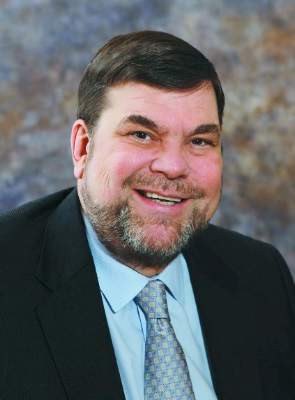The inability for physicians to compound in their offices has moved from a vague threat, to a real hindrance to patient care. The Ohio pharmacy board has stepped into physicians’ offices and has taken customized patient care out of the handsof dermatologists in the state. Ohio is the “test state,” and these rules will be coming to your venue, unless vigorously opposed. Fortunately, the rules being proposed are so outlandish, it is easy to illustrate their idiocy.
The Food and Drug Administration and the state pharmacy boards are citing the U.S. Pharmacopeial Convention (USP) to claim that mixing, dilution, or adulteration of any prescription medication, is compounding. This may require a clean room, a $50,000 laminar flow hood, and a special license from a state pharmacy board.
First, who and what is the USP? The USP is a “scientific nonprofit organization that sets standards for the identity, strength, quality, and purity of medicines, food ingredients, and dietary supplements manufactured, distributed, and consumed worldwide,” according to its website . USP’s drug standards, which are used in more than 140 countries, are enforceable in the United States by the FDA, the website says.
Well, that sounds reasonable and like a good thing, until you learn that your drawing up medicine – any dilution or mixture – for an individual patient will make you a compounding pharmacy. And, unfortunately, the FDA usually follows the USP.
The state pharmacy boards are eager to restrict physicians – along with dentists and veterinarians – and collect annual licensing fees. We are talking big money, power, and dreams of clinical relevancy (and billable activities) here.
I encourage dermatologists to plan a visit to your state representatives, where your demonstration of this silliness – and overreach – should be both fun and compelling. All you need is a simple kit that includes a syringe (but no needles in the statehouse!), a bottle of lidocaine with epinephrine, a bottle of 8.4% bicarbonate, alcohol pads, and gloves.
First, explain to your audience that there is a skin cancer epidemic with more than 5.4 million new cases a year and that, over the past 20 years, the incidence of skin cancer has doubled and is projected to double again over the next 20 years. Further, explain that dermatologists treat more than 70% of these cases in the office setting, under local anesthesia, at a huge cost savings to the public and government (it costs an average of 12 times as much to remove these cancers in the outpatient department at the hospital). Remember, states foot most of the bill for Medicaid and Medicare gap indigent coverage.
Take the bottle of lidocaine with epinephrine and open the syringe pack (staffers love this, everyone is fascinated with shots). Put on your gloves, wipe the top of the lidocaine bottle with an alcohol swab, and explain that this medicine is the anesthetic preferred for skin cancer surgery. Explain how it not only numbs the skin, but also causes vasoconstriction, so that cancer removal can be easily and safely done in the office.
Then explain that, in order for the epinephrine to be stable, the solution has to be very acidic (a pH of 4.2, in fact). Explain that this makes it burn like hell unless you add 0.1 cc per cc of 8.4% bicarbonate, in which case the perceived pain scale will drop from 8 to 2. Then pick up the bottle of bicarbonate and explain that you will no longer be able to mix these two components anymore without a compounding pharmacy license.
Explain that the USP, the FDA, and your state pharmacy board consider this compounding. You should get a look of astonishment, disbelief, then a dawning realization of the absurdity of the situation.
Follow-up questions may include “Why can’t you buy buffered lidocaine with epinephrine from the compounding pharmacy?” Easy, because each patient needs an individual prescription, and you may not know in advance which patient will need it, and how much the patient will need, and it becomes unstable once it has been buffered. It also will cost the patient $45 per 5-cc syringe, and it will be degraded by the time the patient returns from the compounding pharmacy. Explain further that it costs you only 84 cents to make a 5-cc syringe of buffered lidocaine; that some patients may need as many as 10 syringes; and that these costs are all included in the surgery (free!) if the physician draws it up in the office.
A simple summary is – less pain, less cost – and no history of infections or complications.
It is an eye opener when you demonstrate how ridiculous the compounding rules being imposed are for physicians and patients. I’ve used this demonstration at the state and federal legislative level, and more recently, at the FDA. If you get the chance, when a state legislator is in your office, become an advocate for your patients and fellow physicians. Make sure physician offices are excluded from the USP and FDA definitions of compounding.
Dr. Coldiron is in private practice but maintains a clinical assistant professorship at the University of Cincinnati. He cares for patients, teaches medical students and residents, and has several active clinical research projects. Dr. Coldiron is the author of more than 80 scientific letters, papers, and several book chapters, and he speaks frequently on a variety of topics. He is a past president of the American Academy of Dermatology. Write to him at dermnews@frontlinemedcom.com.





